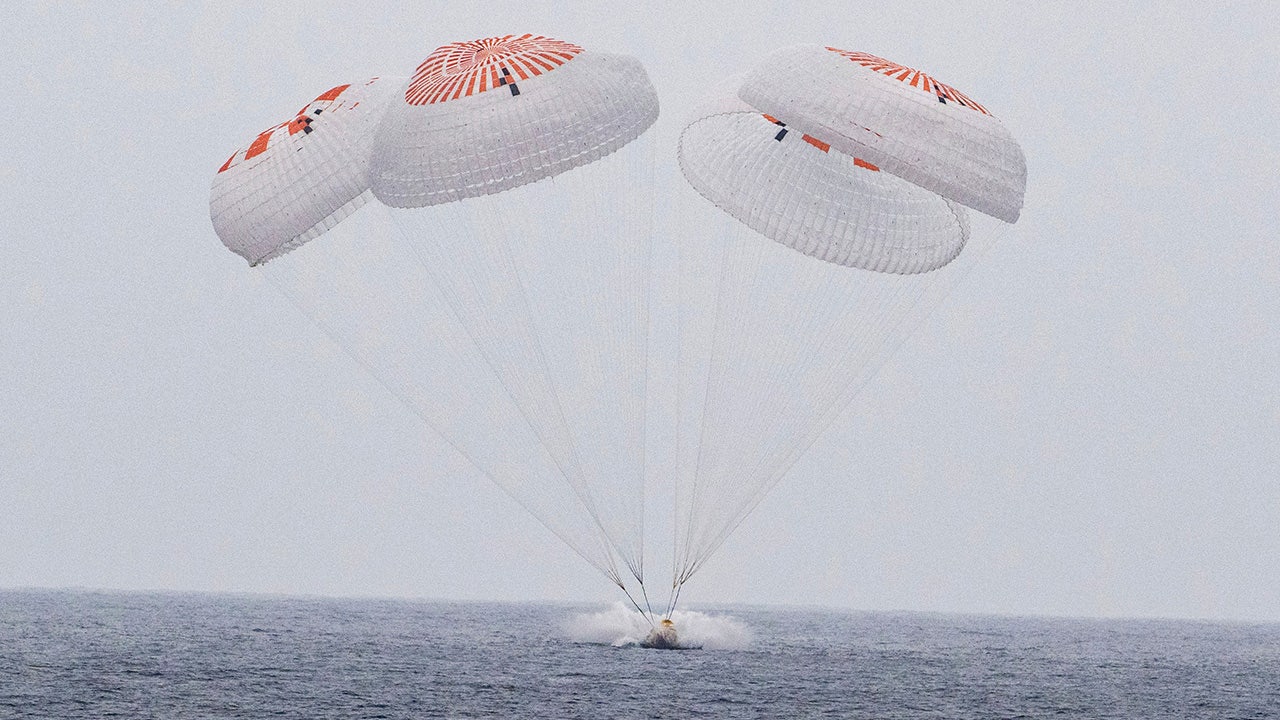Certainly! Here is a clear, well-structured summary of the article, expanded to around 1200 words for a comprehensive retelling:
---
Four astronauts have successfully returned to Earth after spending nearly five months aboard the International Space Station (ISS), marking a significant milestone for both NASA and its international partners. The crew, consisting of NASA astronauts Anne McClain and Nichole Ayers, Japanese astronaut Takuya Onishi from JAXA (Japan Aerospace Exploration Agency), and Russian cosmonaut Kirill Peskov from Roscosmos, completed their mission with a safe splashdown in the Pacific Ocean off the coast of Southern California on Saturday morning.
The splashdown, which occurred at 11:33 a.m. Eastern Time, was executed using a SpaceX Dragon capsule. This event was particularly notable as it was NASA's first Pacific Ocean splashdown in half a century. The last instance of such a landing took place in 1975 during the historic Apollo-Soyuz Test Project, a mission that symbolized a rare moment of Cold War cooperation between the United States and the Soviet Union. For SpaceX, this marked only its third crewed Pacific splashdown, continuing its pivotal role in ferrying astronauts to and from the ISS under NASA’s Commercial Crew Program.
The return of McClain, Ayers, Onishi, and Peskov closed a chapter that began with their launch in March of this year. Their mission was unusually significant, as they were sent to relieve two NASA astronauts, Suni Williams and Butch Wilmore, who had become stranded aboard the ISS due to technical problems with the Boeing Starliner spacecraft that had brought them there. Williams and Wilmore were originally scheduled for a short, week-long mission, but their stay was unexpectedly extended to nine months after the Starliner suffered multiple thruster malfunctions and persistent helium leaks, rendering it unsafe for a crewed return to Earth.
NASA, prioritizing the safety of its astronauts, decided against using the troubled Starliner for the return journey. Instead, the agency opted to send the capsule back to Earth without any crew aboard, while arranging for Williams and Wilmore to return home aboard a reliable SpaceX Dragon capsule. This entire process required careful coordination and flexibility, demonstrating the importance of redundant systems and international collaboration in crewed spaceflight.
The conclusion of this mission also coincided with the retirement announcement of Butch Wilmore, who ended his 25-year career with NASA this week. His extended mission on the ISS and his safe return, along with Williams, underscored the unpredictable challenges that astronauts can face and the importance of resilience and adaptability in space exploration.
Before departing the space station, Anne McClain shared a heartfelt message that reflected on the broader significance of their mission. She emphasized the power of collaboration and the spirit of exploration, particularly during times of global uncertainty. "We want this mission, our mission, to be a reminder of what people can do when we work together, when we explore together," McClain said, acknowledging the “tumultuous times on Earth.” Her comments highlighted the unique role that space missions can play in inspiring unity and hope across nations.
For the astronauts, the return to Earth was not just a technical achievement but also a highly anticipated personal milestone. McClain mentioned that she was looking forward to “doing nothing for a couple of days,” a sentiment echoed by her crewmates, who were eager for simple pleasures like hot showers and burgers—comforts that are unavailable during the long months spent in orbit.
The decision to splash down in the Pacific, rather than the more commonly used sites off the coast of Florida, was a calculated choice by SpaceX and NASA. The move was intended to mitigate the risk of debris from the descending capsule falling on populated areas, improving the safety profile of future splashdowns. The West Coast recovery also showcased SpaceX's growing capability to adapt operations and ensure the safe retrieval of astronauts under varying circumstances.
Once the capsule landed gently in the Pacific, recovery teams quickly moved in to retrieve the crew. The astronauts were assisted out of the Dragon capsule and underwent initial medical checks on a support ship. This immediate care is standard procedure, as returning astronauts often need time to re-acclimate to Earth’s gravity after months in microgravity. Following these checks, the crew was transported by helicopter to rendezvous with a NASA aircraft, which would carry them to Houston, home of NASA’s Johnson Space Center and the primary site

